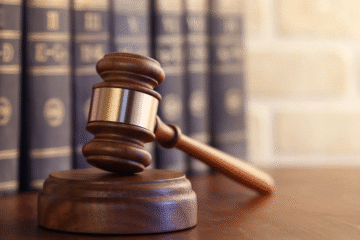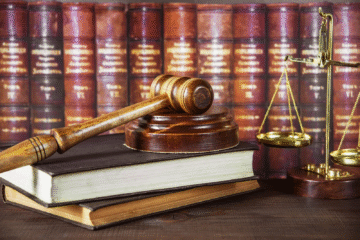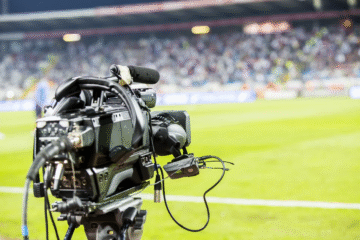
This article is written by Harleen Kaur of 4th Year of BALLB (Hons.) of UILS, Panjab University, Chandigarh, an intern under Legal Vidhiya
ABSTRACT
Sports law is a very wide and dynamic field governing the entire sports community worldwide. This article discusses various aspects of sports law focusing specifically on the rules and regulations in India. There are various authorities dealing with the regulations governing sports arena. Sports in India is a growing industry but it has never been a main stream issue for policy makers.
This article in the latter half talks about doping in the international and the national sports arena. Doping is an illegal and unethical practice. In order to curb this practice, there is an international organisation called World Anti-Doping Agency (WADA) which lays down the World Anti-Doping Agency Code (WADC). In accordance with the same, the Indian Government also established the National Anti-Doping Agency (NADA) along with the Anti-Doping Rules of NADA. This article will also discuss some of the challenges in this framework in India.
KEYWORDS: Sports law, athlete eligibility, dispute resolution, doping.
INTRODUCTION
Sports is an integral part of human life. It is a form of entertainment. According to New Britannica Encyclopedia, “sports and games are recreational or competitive activities that involve some amount of physical strength or skill”.
In India, sports and sports enthusiasm is a part of our culture. A very basic example of that would be our interest in cricket. This is to name just one.
India is a fast-rising competitor in major world sporting events such as the Commonwealth Games, Asian Games and World Cup of Cricket or Hockey. This garners a lot of attention from all around the world.
Considering its role and importance, it becomes necessary to regulate the sports arena for bringing about fairness and ethical competition. Sports law is a specialized field of law which deals with various sports and sports organisations. It has the power to regulate and govern the entire sports industry. Despite that, India does not have any enacted sports law or statute. There have been, over the course of our history, some policy decisions and judgments which are applied to regulate sports and lay down various rules or regulations.
SPORTS LAW IN INDIA
As stated above, there is no enacted legislation in India. Sports is listed as a State subject under Article 33 of the Indian Constitution. It is seen as a very challenging subject. In order to provide guidelines for regulating sports in India, the Ministry of Youth Affairs and Sports was founded in 2000 by the Government of India. The main objective of this body was to promote infrastructure and capacity building in order to increase brilliance in sports at both national and international levels.
The Ministry established the National Sports Federation (NSF) to promote sports as a primary objective. The NSFs would be a governed by the rules for establishment, functioning and conduct laid down by the National Sports Development Code of India (NSDCI). As per the NSDCI, various sports organisations including NSFs are to promote accountability, transparency and regular audits. The Ministry of Youth Affairs and Sports issues notifications and guidelines from time to time for the regulation of NSFs.
STRUCTURE OF SPORTS
In India, there is a three-tier sports infrastructure which is as follows:

There are some grass root level sports clubs as well.
The District Sports Federation, which are combined to formulate the State Sports Federations.
These State Sports Federation, from all States then formulate the National Sports Federation.
SPORTS GOVERNANCE IN INDIA
Sports activities in India are governed by the following authorities/regulations:

- Sports Authority of India (SAI)
The SAI was set up by the Government of India on 16th March, 1984. It is a registered society.
AIM: The SAI aims to implement existing schemes and policies for infrastructural facilities to the sportspersons and other individuals.
It is responsible for the arrangement of funds for tournaments and competitions.
This authority is divided into wings where each wing performs its own functions. These wings are as follows:
- Academic wing
- Team wing
- Operation wing
- Stadia wing
- National Sports Policy
The National Sports Policy was formulated in 1984 with the objective to raise the standard of sports. Every five years, the progress of the policy was to be reviewed in order to determine further course of action.
The functions of the policy include planning, sports education, development of infrastructure and even establishment of NSFs. It also aims at laying down scientific foundations for sports to improve quality of sports equipment, training of athletes, etc. It also focused on providing incentives to sportspersons. However, this policy was not properly implemented.
In 2001, the NSP was then reformulated which was approved. The aim was to achieve excellence in sports on national and international levels. It is provided that there is a need to bring in reforms in it in more concrete terms to realize the terms.
- Sports Law and Welfare Association of India (SLAWIN)
SLAWIN is a national, non-profit and professional organisation.
AIM: The aim of this organisation is to being sportspersons and legal practitioners together in order to understand and advance sports law and its ethical practice in India.
SLAWIN provides consultation on various matters in the field of sports to bring in legal reforms in sports.
- Sports Broadcasting Signals (Mandatory Sharing with Prasar Bharati) Act, 2007
The case of Ajay Jadeja v. Union of India[1] brought a lot of legal reforms in sports in India with respect to lack of integrity, lack of co-ordinated investigation especially related to the IPL. It was held that sporting bodies perform certain public function and hence are subject to writ jurisdiction of High Court.
In the case of Zee Telefilms v. Union of India[2], it upheld the Ajay Jadeja judgment.
In BCCI v. Cricket Association of Bihar[3], the Supreme Court asked the Law Commission to examine whether BCCI is public authority or not. It was directed to give recommendations in July 2016. As a result, the Law Commission recommended in its 275th Report that BCCI should be brought within the purview of Right to Information Act, 2005. It would mean that BCCI is qualified to be classified as ‘State’ under Article 12 of the Constitution. If approved, the BCCI would be amenable to PILs in the Supreme Court and High Courts.
In 2011, the National Sports Development Bill was proposed but was not passed as there was a need for it to be revised to make it more comprehensive. As per the revised bill, 25% representation was guaranteed for sportspersons in NSFs. It aimed at providing more transparent procedures. This bill provided to bring NSFs within the ambit of RTI to curb sexual harassment and doping in sports. It was also proposed to formulate an Ethics Commission to enforce a code of ethics to be complied with. Also, the bill proposed for the establishment of Sports Election Commission to elect fair members for National Olympic Committee, NSFs and Athletes Commission. It also provides for the establishment of the Appellate Sports Tribunal[4].
Another bill known as the Prevention of Sporting Fraud Bill was proposed in 2013, which was drafted by the Ministry of Youth Affairs and Sports. It proposed for the need to punish offender of sporting fraud. It defines sporting fraud and provides for a maximum punishment of five years with a fine of 10 lakhs or five times the economic benefits so derived, whichever is greater. This bill came in after the IPL Match fixing scandal as there were no specific provisions to deal with the same. This lays down for the need of a legislation to weed out corruption in Indian sports. The problem with this bill is that it does not provide for provisions to deal with the corruption within the sports committee.
INTERNATIONAL SPORTS LAW AND INDIA
International sports law is a set of rules and regulations which govern and regulate sports on an international/global scale. These rules deal with doping control, sports governance, eligibility, dispute resolution, etc.
India, being a member of the international sports community, is also influenced by the international sports law in various ways, some of which are as follows:
- Sports Governance: India is a member of international sports organisation such as International Olympic Committees and various other international sports federation, which lay down rules and regulations to be adhered to when participating in international sports. India is hence bound by principles of international sports governance along with good governance and ethical conduct set forth for the international sports arena.
- Athlete Eligibility: International sports law governs eligibility criteria of athletes to be a participant in international sports events such as qualifications, age limits, nationality and doping control. India is also to comply while selecting and fielding athletes for international competitions.
- Anti-Doping: The regulations laid down by the World Anti-Doping Association (WADA) known as World Anti-Doping Code, to curb doping are to be complied with by India such as testing, doping violations, etc.
- Dispute Resolution: The Court of Arbitration for Sports (CAS) is an independent international tribunal that hears and resolves sports-related disputes. Indian athletes may also be bound by such bodies and may have to participate in these proceedings if they are the part of such international sports disputes.
- Hosting Sports Event: India has hosted various sporting events in the past such as Commonwealth Games, FIFA U-17 World Cup and International Cricket Tournament. For hosting such events as well, India (and every hosting country) would be bound to comply with international regulations, guidelines for infrastructure, safety, anti-doping control, etc.
- International Sports Broadcasting and Sponsorship: International sports law also affects sports, broadcasting and sponsorship activities in India to comply with international rules and agreements with respect to security rights and permissions.
DOPING
Doping is the use of illegal substances by sportspersons/athletes to improve and positively impact their performance. It is a global issue concerning the entire sports community. Doping is illegal and unethical.
Merriam Webster Dictionary, defines doping
“The use of a substance (such as an anabolic steroid or erythropoietin) or technique (such as blood doping) to illegally improve athletic performance”
The defined with Article 1 of WADA Code as
“Doping is defined as the occurrence of one or more of the anti-doping rule violations set forth in Article 2.1 through Article 2.10 of the Code.”
Article 2 defines the circumstances in which consumption of certain substances would be termed as doping.
INTERNATIONAL REGULATIONS FOR DOPING
In 1998, there was a raid conducted and a large amount of prohibited medical substances were found during Tour-de-France. This was an international scandal which emphasized the need for an international agency to lay down anti-doping regulations.
Finally, the International Olympic Committee convened the first World Conference on Doping in Sports in February 1999. This led to the establishment of the World-Anti Doping Agency on 10th November, 1999 which is responsible for conducting scientific research, education, development of anti-doping standards and monitoring of World Anti-Doping Code (the WADC).
WADC is a document which harmonizes policies to curb doping practices in sports around the world.
Any violation of such rules could lead to strict punishments as laid down by WADA in 2013 with two to four years of being banned as an athlete.
As per the new WADC of 2015, there has been a consideration for increased flexibility in the matters of mistaken consumption of a prohibited substances or where there is a full cooperation with the investigating authorities.
ANTI-DOPING FRAMEWORK IN INDIA
- National Anti-Doping Agency
India is a signatory to the Copenhagen Declaration on Anti-Doping and the UNESCO International Convention against Doping. As a result, the Government of India established the National Anti-Doping Agency (NADA) in order to tackle the issue of doping in India—specially with India being a prominent member of the international sports community.
NADA was established as a registered society on 24th November, 2005. NADA also accepted a revised version of WADC on 7th March, 2008 and framed Anti-Doping Rules of NADA in conformity with WADC.
- Anti-Doping Rules of NADA
As stated above, the Anti-Doping Rules of NADA are laid down in conformity with the WADC. These rules place a strict responsibility on athletes to be aware of whatever substances they ingest. The food or the supplements consumed by the athletes are to be closely monitored. If they are found to be in violation of the same, it could lead to:
- Disqualification of the athlete from the sports, or
- Forfeiture of records, medals, prizes, etc., or
- Financial sanctions, or
- Any other sanctions as seen fit.
CERTAIN INSTANCES OF DOPING IN INDIA
In the year 2000, a discus thrower named Seema Antil was tested positive for pseudoephedrine. As a result, she was stripped off of her gold medal at the World Junior Championships along with a public warning by the National Sports Federation.
In 2005, discus throwers named Anil Kumar and Neelam Singh were handed two-year suspension because they were tested positive for Norandrostane. Anil Kumar was disqualified from the Asian Championships and was also stripped off of his bronze medals.
Further in 2010, another athlete named Saurabh Vij (shot putter) was banned for two years as he was tested positive for a banned stimulant—Methylhexanamine. However, NADA cleared him within a few weeks which meant that he was no longer banned and he then went on to participate in the 2010 Commonwealth Games.
Then in 2011, NADA banned six athletes for a period of one year—three of them were 2010 Commonwealth Games and Asian Games gold medalists). Mandeep Kaur, Sini Jose and Ashwini Akkunji were members of the Asian Games.
In 2016, just before the Rio Olympics, Indian athletes—Inderjit Singh and Narsingh Yadav, were linked with the dope test failure shocked the whole nation. Due to this controversy, Narsingh Yadav, who was about to represent India in the 74kg category for freestyle wrestling could not participate in the Olympics with the decision of the Court of Arbitration in Sports (CAS) for not giving him a clean chit in the matter.
ANALYSIS
The issue with the Anti-Doping Rules of NADA is that they were adopted verbatim from the WADC, without any consideration to the Indian reality.
In India, there is lack of awareness of the prohibited substances and doping standards. Moreover, there is also not enough access to resources to be educated about such rules and regulations.
Also, it is not entirely the responsibility of the coaches as they are responsible to oversee the athletes and most of the times decide the diet for their athletes.
In addition, there are not enough laboratories in India equipped enough to undertake very specific tests on supplements. Even with the handful of available ones are very costly so most of the athletes cannot afford these.
So it is said that NADA should focus not just on deterrent measures but also work on educating the athletes.
CONCLUSION
Sports law encompasses a wide range of legal principles, rules and regulations which regulate or govern the sports industry. In has a number of aspects in its ambit such as governance, intellectual rights, anti-doping regulations, dispute resolution, etc.
Just like any other field, sports industry also keeps on evolving. The techniques, equipments, etc. keep on advancing based on scientific research. Hence, the sports law also keeps on transitioning to include data privacy, gender equality, e-sports, etc.
India, being an active member of the international sports community is hugely impacted by the international sports law including compliance with the WADA and WADC with the aim to tackle doping practices.
The challenges to be overcome in the future are to improve transparency, addressing mental health of athletes, focusing on international cooperation and protecting contractual rights of the participants.
REFERENCES
- Dr. Anil Kumar, Reetinder Kaur, Sports Law in India: Present Status and Future Road Map, 15 JASRAE, 33-39 (2018)
- Rohit Kumar Dugar, Overview of Sports Law in India: Meaning, Concept and Laws, 9 Journal of Legal Studies and Research, 45-61 (2023)
- ANTI-DOPING REGULATIONS IN INDIA, https://www.mondaq.com/india/sport/623940/anti-doping-regulations-in-india (Last Visited on 22nd September, 2023)
- Preksha Preya, India’s Anti-Doping Laws: Reforms Are Needed, IP & Legal Filings, (2023), https://www.ipandlegalfilings.com/indias-anti-doping-laws-reforms-are-needed/#_ednref2
- SPORTS GOVERNANCE AND ISSUES, https://www.drishtiias.com/daily-updates/daily-news-analysis/sports-governance-and-issues (Last Visited on 22nd September, 2023)
- Aryya Sinha, Sports Law in India and How Can It Be Used for Sports Development, The Amicus Qriae, https://theamikusqriae.com/sports-law-in-india-and-how-can-it-be-used-for-sports-development/
- The Critical Role of Sports Law and Legal Aspects in India’s Sporting Landscape, https://www.linkedin.com/pulse/critical-role-sports-law-legal-aspects-indias-sporting-landscape/ (Last Visited on 22nd September, 2023)
[1] 95 (2002) DLT 14
[2] (2005) 4 SCC 649
[3] AIR 2015 SC 3194
[4] “Draft National Sports Development Bill, 2013”, Ministry of Youth Affairs and Sports, Govt. of India.




0 Comments